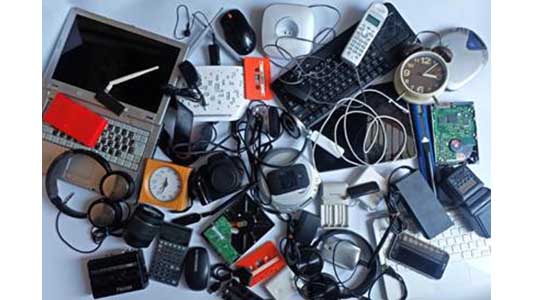According to Fact.MR, a market research and competitive intelligence provider, the worldwide electronics recycling market is anticipated to garner US$ 120 billion by 2033, expanding at a high-value 13.1% CAGR from 2023 to 2033.
Electronic equipment, by nature, becomes obsolete or requires repair from time to time. It is less costly to replace an electronic device than to repair it. As a result, people are more likely to acquire new products rather than repair old ones. This increased rate of obsolescence is currently generating a considerable volume of e-waste.
Electronic devices that have come to the end of their useful lives for the user are referred to as e-waste. These products contain important materials, yet they are harmful to the environment if they are disposed of in a landfill or burned. As a consequence of escalating electronic waste, countries are expected to devote more resources to electronics recycling.
Most people are unaware of the possible negative ramifications of increasing computer, television, and mobile phone use. When these things are thrown away in landfills or destroyed, the toxic compounds contained within them pose a health risk. Electrical items that are incorrectly disposed of have the possibility of causing environmental harm. Environmental toxins are projected to become more prevalent as more e-waste is thrown away in landfills, raising the likelihood of neurological disorders.
As a result, several governments, non-profit organizations, and equipment manufacturers are undertaking efforts to promote electronics recycling. Governments are helping to manage e-waste more efficiently and effectively by enacting rules such as extended producer responsibility (EPR).
Moreover, due to the enormous expansion in the usage of electrical and electronic equipment, manufacturers, distributors, and retailers are being forced to explore new business models. This has placed emphasis on circular electronics, in which producers concentrate on creating and promoting the usage of recycled and reconditioned electrical and electronic equipment.
Key Takeaways from Market Study
- The global electronics recycling market is worth US$ 35 billion in 2023.
- Worldwide demand for electronics recycling is projected to surge at a CAGR of 13.1% during the forecast period (2023 to 2033).
- The market is estimated to hit a valuation of US$ 120 billion by 2033.
- The Asia Pacific market is predicted to expand at a CAGR of 8.5% from 2023 to 2033.
- The consumer electronics segment accounted for 40% share of the global market in 2022.
“The global electronics recycling market is greatly benefitting from factors such as short life span of electronic items, rising e-waste globally, creation and implementation of strict recycling policies, and technological improvements,” says a Fact.MR analyst.
Regional Analysis
Asia Pacific is dominating the worldwide market. Japan and South Korea are complementing market development in Asia Pacific. Europe and North America are following Asia Pacific in terms of growth. The United Kingdom and Germany are making significant contributions to the European market.












